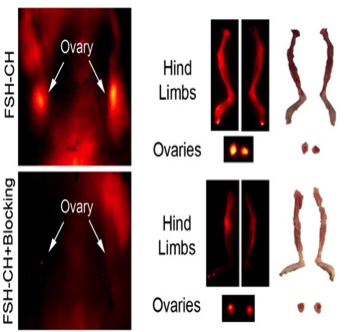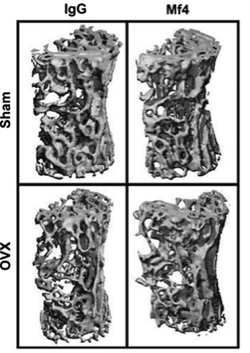The PNAS (Proceedings of the National Academy of Science of the United of America, PNAS), 12 February 2018, published a cooperation research paper made by Mount Sinai School of Medicine (MSSM) and Wuhan University School of Stomatology.
Dr. Ji Yaoting (School & Hospital of Stomatology, Wuhan University) is the first author of this paper and Professor Zhuan Bian (School & Hospital of Stomatology, Wuhan University) and Mone Zaidi (MSSM) as the equal corresponding author.
Previous studies have shown that the postmenopausal high levels of FSH promoted bone resorption through enhancement of osteoclasts function which cause osteoporosis. Considering that, the researchers designed a specific antibody against FSH to block its action. This study found that blocking FSH action using two purposefully designed epitope-specific antibodies protects against bone loss in mice. This positions both FSH antibodies as lead molecules for clinical development toward future use in people. If the noted proaging actions are FSH-dependent, they could represent a mechanism for the trade-off between fertility and longevity .
This achievement was supported by National Natural Science Foundation of China, International (regional) cooperationproject (To Prof. ZhuanBian, and Prof. Mone Zaidi,), Young talent project for studying abroad (Wuhan University School of Stomatology) and the related projects of National Institutes of Health (NIH, US).

NIR-II imaging of Fshr-expressing ovaries and bones using FSH-CH in adult female mice. Supine view showing fluorescent signals in ovaries, which were blocked with 30-fold excess of unconjugated FSH; this indicated hormonal specificity of signals. (Middle) NIR-II fluorescence was detected in dissected ovaries and hind limbs (Top); 30-fold excess of unconjugated FSH blocked these signals (Bottom)

The effect of Mf4 on bone in ovariectomized and sham-operated mice. Injection of Mf4 for a short, 4-wk period resulted in statistically significant or marginal increases in BMD, BV/TV, Tb.N, and Conn.D in ovariectomized and/or sham-operated mice



